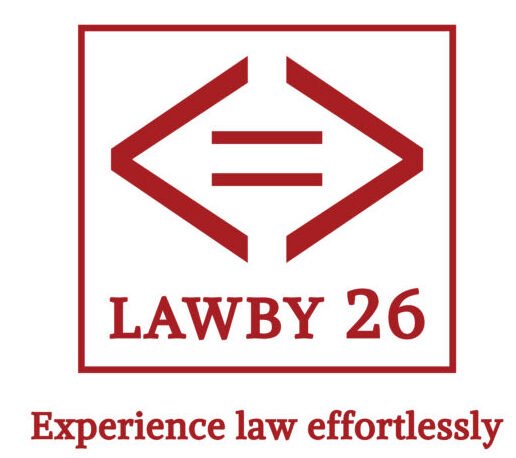Madrid Protocol-India Trademark

The Madrid Protocol is a treaty among UN member nations that simplifies trademark registration globally. Instead of registering trademarks separately in each country, the proprietor can file only one “international application” for the registration of trademarks. This application protects their trademarks in any nation that has agreed to the Protocol. The World Intellectual Property Organisation (WIPO) governs the Madrid Protocol by making trademark registration worldwide easy and cost-effective. The trademark proprietor benefits from this Protocol, allowing them to protect their trademark in various countries with a single application. THE OBJECTIVE OF THE MADRID PROTOCOL: The Madrid protocol’s main objective is to: i) The Madrid Protocol allows trademark proprietors to apply for trademark protection in multiple countries by submitting just one application. Instead of going through the process of applying for a trademark separately in each country. ii) The Madrid Protocol establishes a standardized process for trademark registration across all countries that are members of the Protocol. iii) Madrid protocol simplifies the tasks such as renewing the trademark registration, updating proprietor information in case of changes, and modifying the list of products and services associated with the trademark. International Trademark Registration Process Under Madrid Protocol. INTERNATIONAL TRADEMARK REGISTRATION PROCESS UNDER MADRID PROTOCOL: The procedure for international trademark registration under the Madrid Protocol is as follows: i) TRADEMARK SEARCH Before filing for trademark registration, the applicant will need to do a trademark search, where they shall check the WIPO global brand database to see if any other trademark is similar to theirs. It is essential to check that no similar or identical trademark is already registered in Madrid protocol member nations. In case of a similar trademark, the application will be rejected. ii) FILE REGISTRATION APPLICATION After examination of the trademark search, the applicant shall submit an International registration application in Form MM2(E). This application must be filed at the office of the trademark registrar in India, for which Indian firms can start by filing in India. The trademark registrar will process and verify the application before sending it to the World Intellectual Property Organization (WIPO) in Geneva, along with the processing fee. Foreign trademark applications shall be submitted electronically via the official IP India website. iii) EXAMINATION OF APPLICATION BY WIPO The WIPO will review the trademark registration application after the Registrar of Trademark Office submits it. If the WIPO determines the suitable registration application, the trademark will be included in the International Register and published in the WIPO Gazette of International Trademarks. iv) NOTIFICATION OF TRADEMARK REGISTRATION BY WIPO After examination of the application by WIPO, if the application is qualified for Trademark registration, then the WIPO will notify each member nation of the Madrid Protocol regarding the International Trademark Application. Each member nation will review the application with their respective trademark laws and regulations. Within a period of 12 to 18 months of receiving the application, the member nations will provide their examination report to WIPO, indicating whether they accept or reject the application for trademark registration. v) OPPOSITION TO TRADEMARK REGISTRATION If any member nations object, the trademark registration application must be appropriately filed with the WIPO. The trademark applicant and the relevant Madrid Protocol member state will deal directly with the opposition to the trademark application. The response, appeal, hearing, and prosecution are the opposing procedures. The whole opposition process will involve the WIPO. vi) GRANT OF INTERNATIONAL TRADEMARK REGISTRATION Once the member countries accept the application, the trademark will be registered under the Madrid Protocol in the respective chosen countries for a period of ten years. Following approval of the registration application, the applicant will receive a statement of grant attesting to the international trademark registration of an Indian trademark. INDIA’S ENTRY INTO THE MADRID PROTOCOL: India ratified the Madrid Protocol in 2013, As a result, ratification eased the trademark registration process internationally. Previously, Indian-based brand owners have been going through costly and time-consuming procedures protecting their trademarks in multiple countries. However, they can now protect their trademarks in different countries using a single application in their own country through the Madrid Protocol. The Madrid System’s implementation in India falls under the Trade Marks Act of 1999 (amendment) based on the Madrid System, under the control of the Controller General of Patents, Designs, and Trademarks. The Madrid System review process is explicitly outlined, and the approved timeframe for assisting is implemented. Additionally, the CGPDTM has issued guidelines to ensure a standardized process for foreign applicants who include India in their International Application under the Madrid Protocol. Amendments to Indian Trademarks Law India modified its Trademarks Law to conform to the requirements of the Madrid Protocol. A new chapter (Chapter IVA) [1] of the Trade Marks Act 1999 was added by the Trade Marks (Amendment) Act, 2010, which outlined the legal and procedural prerequisites for international mark registration. [1] Chapter IVA of the Act AUTHOR: M Shanthish Kumar, 5th year B.A, LL. B(Hons.), Veltech School of Law, Chennai
Citizenship Amendment ACT, 2019
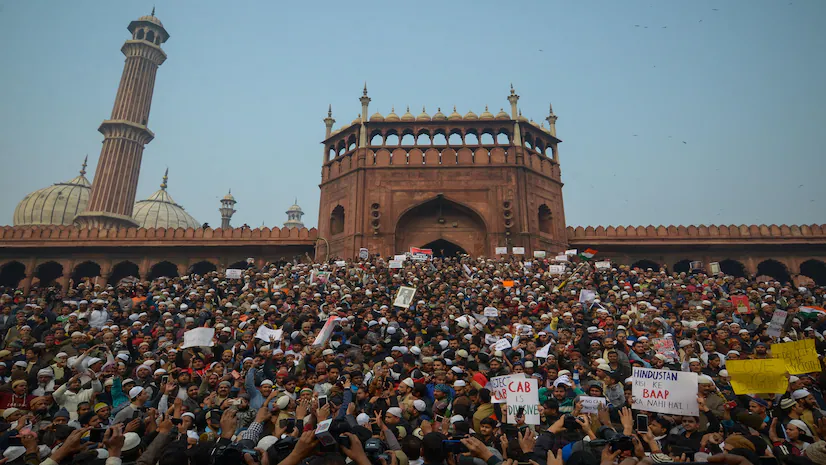
LEGALITIES OF CAA In December 2019, the Parliament revised the Citizenship Act, 1955 (1955 Act), generally referred to as the CAA, adding a new proviso to Section 2(1)(b), which defines “illegal migrants. Hence, individuals who came to India on or before December 31, 2014, and who were members of the Buddhist, Hindu, Sikh, Jain, Parsi, or Christian communities from Bangladesh, Pakistan, or Afghanistan and who were granted exemptions by the Central government under the Foreigners Act, 1946, or the Passport (Entry into India) Act, 1920, were not to be considered “illegal migrants” but rather qualified to apply for citizenship under the 1955 Act. The law relaxed the standards for a few categories of migrants from three neighbouring countries where the predominant population is Muslim. THE LEGAL CHALLENGE: The Indian Union Muslim League (IUML) contested the modification in the Supreme Court in 2020. Since then, the IUML’s challenge has been attached to more than 200 petitions that have been filed. These comprise petitions from political parties like the Asom Gana Parishad (AGP), Muslim Students’ Federation (Assam), Assam Pradesh Congress Committee, National People’s Party (Assam), and Dravida Munnetra Kazhagam (DMK), as well as politicians Asaduddin Owaisi, Jairam Ramesh, Ramesh Chennithala, and Mahua Moitra. VIOLATION OF ARTICLE 14: The Citizenship (Amendment) Bill 2019 was challenged in court by the Indian Union Muslim League (IUML) as soon as possible. Soon afterwards, the IUML request was included in close to two hundred petitions. Article 14 of the Constitution guarantees equal protection under the law and equality before the law for all “persons,” not just citizens, which is the main point of contention against the statute in these petitions. Furthermore, it was argued that it is against secularism, an essential element of the Constitution, to require citizenship to be based on one’s religion. Petitioners argue that any distinction between individuals must have a “reasonable nexus” to the legislation’s purpose and be based on an “intelligible differentia,” which they claim is not met by the selective protection for specific religious minorities from neighbouring nations. His kind of argument has been made before the Supreme Court. CENTRE’S RESPONSE: In its affidavit before the Supreme Court, the Centre referred to the CAA as a “benign piece of legislation”. It stated that its goal is to grant amnesty to people from designated nations with a specific deadline. It made clear that the bill impacts no Indian citizen’s legal, democratic, or secular rights in any way. “The CAA does not aim to identify or offer solutions for any type of alleged persecution that could be occurring globally, or that could have occurred in the past anywhere in the world,” the administration rationalized. As per the affidavit, the “narrowly tailored legislation” was enacted to address a particular issue, which is the religious persecution of minorities. This was done given the theocratic constitutional position of the countries in question, their systematic functioning, and the de facto situation that may have resulted in minorities feeling fearful. Status before the Supreme Court A bench composed of Justices B.R. Gavai, Surya Kant, and former Chief Justice of India (CJI) S.A. Bobde declined on December 18, 2019, to stop the law’s implementation. Instead, the bench suggested that the government clarify the Act’s true intent to dispel any misconceptions about its objectives to the public. The Court denied a similar plea for a stay on January 22, 2020, focusing on its need to hear from the government first. Consequently, the Centre was given four weeks to respond to the petitions. Stay on CAA rules: The Supreme Court has been approached by various parties, including the IUML, DYFI, AASU, and opposition figures like Mr. Debabrata Saika and Mr. Abdul Khaleque, seeking to halt the regulations issued on March 11. They argue that these regulations undermine the independent assessment of citizenship applications by local authorities and deprive state governments of their role in granting citizenship. The petitioners contend that the Central government lacks the authority to assess eligibility and that the State government’s input is essential. They emphasize that there was no urgent need for immediate action and suggest that implementation should have been postponed until the Supreme Court issued a definitive ruling. THE CHALLENGE FACED BY SECTION 6A OF THE CITIZENSHIP ACT: Section 6A of the Citizenship Amendment Act, significantly related to the Assam Accord on August 15, 1985, faced challenges. On December 23, 2023, the Constitutional Bench of the Supreme Court, led by D Y Chandrachud, prorogued to rule on its constitutional validity. Section 6A of the Act specifies the criteria defining foreigners in Assam between January 1, 1966 and March 25, 1971. Section 6A lays out the rules for who gets considered a “foreigner” in Assam, particularly those between January 1, 1966, and March 25, 1971. The integrity of the Accord is on the line here, especially since the Citizenship Amendment Act might seem like it’s breaking the Accord if March 24, 1971, is the proper cut-off date. AUTHOR: M Shanthish Kumar, 5th year B.A, LL. B(Hons.), Veltech School of Law, Chennai
India’s Rcep Withdrawal

Regional Comprehensive Economic Partnership is an agreement on free trade between 16 countries in the Asia-Pacific region, which include China, Japan, South Korea, Australia, New Zealand, and ten members of ASEAN. The ratified countries aim to stimulate economic cooperation and reduce trade barriers, including tariffs, to establish a unified market. However, Indian authorities refused to sign the given agreements, mainly because of the risks of legalization in the country may experience significant harm to domestic sectors, including agriculture and manufacturing. An increase in the supply of cheap imports destroys local competitors. REASONS FOR INDIA’S WITHDRAWAL: First, India has been cautious about its trade deficit as it expands with countries under free trade agreements (FTAs). In the last six years, India’s bilateral trade deficit almost doubled to $105 billion in 2018-19. This increase could lead to a decline in India’s foreign exchange reserves. In 2018-19, only 20% of India’s exports went to RCEP Nations, whereas 35% of India’s imports came from them. India has a trade deficit with Australia, China, Indonesia, Laos, Myanmar and the Philippines. Second, India is concerned that RCEP could reduce tariffs and tariffs on member states, potentially allowing Chinese goods to flow into India and widening the trade deficit again. India has already imposed tariffs on Chinese emissions, but there are fears that these could be weakened under RCEP. China, which is the largest exporter of most RCEPs, including India, appears to be engaged in “market imperialism” practices. India considers inadequate subsidies for Chinese exports and is concerned that 75% of Chinese goods could enter India duty-free in the future, increasing the already existing trade surplus by $63 billion. IMPLICATIONS OF INDIA’S EXIT OF RCEP i)By leaving the RCEP, India can still prevent China from dumping goods into India. But Chinese products, from turbines to needles, are widely available in the Indian market. ii)Avoiding the RCEP will shield the Indian indigenous industry from low-cost imports. iii) India’s absence from the Regional Economic Partnership (RCEP) will strengthen China’s economic hegemony, potentially enhancing its regional influence through its greater economic strength. This could reverberate in India’s neighbouring countries, further strengthening China’s regional influence. iv) If the agreement is signed, it will signal the recognition of free trade, which could help drive industries from China to India. ANALYSIS OF WITHDRAWAL I) The opening of the Indian market to RCEP countries, especially China, may have had a negative impact on the domestic manufacturing sector. ii) There is also a rising belief that it would be in India’s best interests to invest heavily in ongoing bilateral negotiations with the United States and the European Union. iii) India, along with some other countries, is now joining the Indo-Pacific Economic Framework for Prosperity, which is led by the United States. AUTHOR: M Shanthish Kumar, 5th year B.A, LL. B(Hons.), Veltech School of Law, Chennai
Legislation Of biobanks In India

Biobanks are collections of human biological material and related information stored for research purposes. They are valuable to scientists because they help them learn more about human health and disease. Biobanks don’t always do the actual research, but they give samples to scientists who do. These samples are often donated voluntarily or taken after death. They can also be stored in case they are needed later. The research objectives may not be determined at the time of sample collection. Biospecimens might also be collected with future applications in mind. EXISTING REGULATIONS IN INDIA India doesn’t have specific laws for biobanks. Instead, they follow the 2017 National Ethical Guidelines by ICMR. These guidelines define biobanks and set standards for biospecimen identifiability and donor consent, and there are other guidelines, such as stem cell research and gene therapy. In 2019-2020, the Indian Association for Assisted Reproduction formulated guidelines for assisted reproductive technologies (ART). Although efforts were made in 2006-07 to set up a national repository of human genetic material, it has not been approved. The Transplantation of Human Organs and Tissues Act of 2014 regulates the preservation of organs and tissues but lacks detailed provisions. The proposed Personal Data Protection Bill of 2019 seeks to protect personal data, including health information. ETHICS OF BIOBANKING: Biobanking raises fundamental ethical concerns due to factors like limited knowledge, the sensitive nature of data, unpredictable outcomes, and socioeconomic disparities. In the context of biobanks, informed consent presents a difficult challenge. Samples collected for biobanks may not be used immediately but may be retained for future research purposes, making it harder for donors to understand their implications fully. Socioeconomic factors influence biobanking ethics more significantly because low-income and middle-income countries with greater genetic diversity tend to sample despite solid regulatory frameworks. Despite guidelines such as the ICMR Guidelines for the Modification of Human Organisms for Medical Research Purposes, widespread application is still lacking. Lack of clarity in the process of implementing guidelines and non-enforcement contribute to non-compliance. Even leading agencies like ICMR, CSIR, ICAR, DBT, and DST do not follow these guidelines consistently. There have been cases of unauthorized export of biospecimens, again highlighting the challenges of ensuring compliance. CONSENT MODELS IN BIOBANKING: Biobank research is future-focused, informed consent is a more complicated concept in biobanking than it is in traditional research. Various consent approaches are employed in biobanking, contingent on the study’s specific needs. (i) BROAD CONSENT: Consent enables the biobank to collect, store and generally use samples upon registration. Donors approve in advance, guaranteeing that the model will be used to the extent that they do not have to request approval multiple times for each research project. (ii) STUDY-SPECIFIC CONSENT: Here, consent is obtained for a specific research project, where information is sought from the participants whenever a sample is used for another purpose. (iii) TIERED CONSENT: Participants are presented with a list of study groups to be used in sampling, allowing for consensus on relevant groups. This approach gives stakeholders the control while reducing administrative tasks, improving the efficiency of biobanking practices. DATA CONFIDENTIALITY: Various sample identity levels have been designed to preserve data confidentiality. COMMERCIAL BIOBANKING: Biobanking is used for research and commercial purposes. It is also essential to understand the commercial value of biobanks and their potential to improve public health. If used for commercial purposes, biobanking can lead to the exploitation of vulnerable people. It is important to be aware of this potential problem. i) PHARMACEUTICAL INDUSTRY: The pharmaceutical industry is based on research to evaluate the efficacy of drugs before manufacture. Biobank specimens are essential for clinical trials and complement pharmacogenomic research to test new drugs and detect potential side effects. By accessing genetic patterns, researchers can gain insight into disease profiles and community vulnerabilities and improve treatments and vaccines. ii) HEALTHCARE INDUSTRY:New technologies make it more efficient while reducing the use of biodiversity. Biotechnology enables detailed analysis of bio samples and comprehensive data processing. Access to biobank samples can help biotechnology companies discover medical biomarkers. AUTHOR: M Shanthish Kumar, 5th year B.A, LL. B(Hons.), Veltech School of Law, Chennai
Cloud Security Laws In India
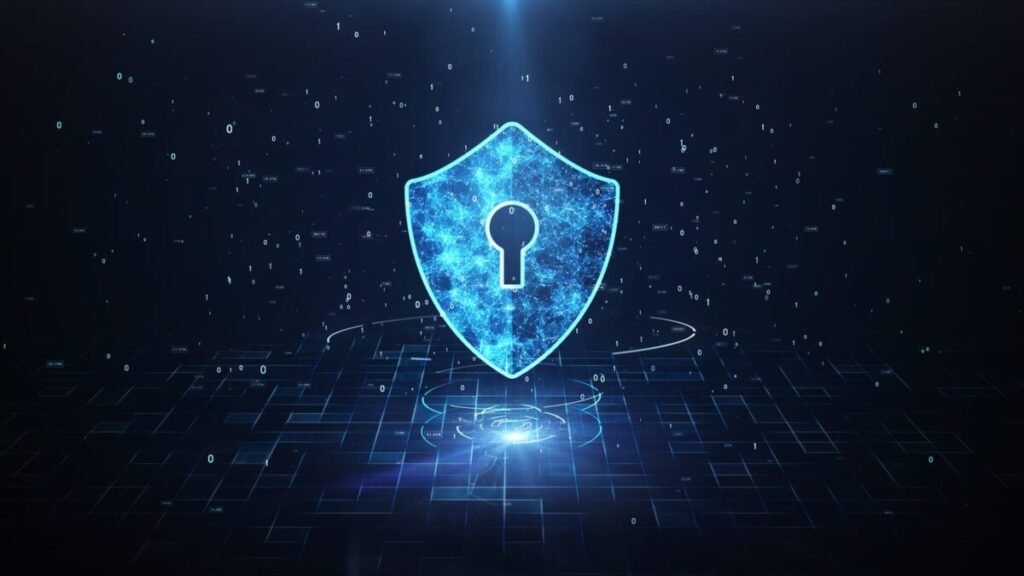
Cloud computing is the transmission of computer services such as servers, storage, databases, networking, software, analytics, and intelligence over the Internet (hence referred to as “the cloud”) to provide flexible resources, speedier innovation, and economies of scale. More effectively, this will allow us to expand as our company evolves. [1] Users can use cloud computing to work with data located on remote networks after granting access. The backend cloud storage, applications, and services housed in server farms or cloud farms throughout the globe are connected to the client-side front-end infrastructure, which consists of laptops and desktop computers. The cloud has become the go-to service paradigm for essential and non-critical applications because of high-speed Internet connectivity and data storage and retrieval technology advancements. CLOUD COMPUTING IN THE CONTEXT OF THE TMT INDUSTRY: The telecommunications, information and technology (TMT) industry is growing rapidly due to the increasing demand for technology-driven products and services. Despite the impact of COVID-19, the TMT industry in India continues to grow. Changes in the legal and regulatory framework, including new regulations on cloud computing, have been observed in various TMT sectors. The rise of remote work and online activities has led to a sharp rise in the demand for cloud services. Investments in security software, cloud-based solutions, and virtual private networks (VPNs) are essential to the growth of the TMT business. Currently, laws do not specifically regulate cloud services in India; foreign cloud service providers can operate in the country without the need to obtain local licenses or set up local companies. Restrictions or prerequisites for foreign funding mean no investment in cloud business in India. LEGAL REQUIREMENTS IN CLOUD COMPUTING: Although the cloud services market lacks regulation, the Telecom Regulatory Authority of India (TRAI) has proposed forming a non-profit industry association to oversee Cloud Service Providers (CSPs) with a light-touch regulatory approach. To address concerns about foreign corporations accessing Indian data, TRAI recommends establishing local data centres, content delivery networks, and independent interconnect exchanges in India for better control over data exchange. [2] The Information Technology Act of 2000 (IT Act) and subsequent updates govern cloud security in India, requiring organisations to follow security policies to protect sensitive data under Section 43A[3] and prohibiting the sharing of personal information without consent under Section 72A.[4] The Personal Data Protection Bill, 2019[5] (PDP Bill) aims to regulate personal data processing, emphasising data minimisation, purpose limitation, and accountability to protect data stored in the cloud. Reserve Bank of India (RBI) guidelines on outsourcing financial services also apply to cloud service providers, ensuring data sovereignty, audit trails, and compliance with data localisation regulations. Sector-specific requirements like HIPAA and PCI DSS may also apply to organisations using cloud services in healthcare or banking. India’s Cyber Security Strategy for 2020 aims to enhance cybersecurity measures, protect vital infrastructure, and raise awareness to mitigate risks associated with cloud computing. PROGRESS IN REGULATED SECTORS Government agencies like RBI, SEBI, and IRDA regulate various sectors in India, such as banking, insurance, and capital markets. They practised the impact of cloud computing in their fields. SEBI, according to a report from MEITY, notes the interest of financial institutions in cloud solutions for governance, risk and compliance. However, according to the ministry, shared cloud infrastructure poses a risk to data security as it can cross legal boundaries. RISK AND CHALLENGES PERTAINING TO CLOUD COMPUTING: Cloud computing offers many benefits, such as improved collaboration, accessibility, mobility, and increased storage capacity. However, there are obstacles, such as (I) Data Privacy Protection and security: Privacy in the cloud can be a huge hurdle. Cloud service providers must have security measures in place (contractual requirements, security policies, organisational SOPs, etc.) to ensure that data is appropriately shared and secured, as they are often data users. However, the more valuable the data, the more vulnerable it is to unauthorised access attempts and cyberattacks. (ii)INSECURE APIS: APIs in cloud services allow users to customise their experience but also pose security risks. They enable customisation and provide encryption, access, and authentication, further simplifying data storage. Despite the benefits, they give hackers more opportunities. Cloud computing regulations lack precise regulation, creating governance gaps. TRAI has proposed “light touch” rules for 2017 and 2019, as well as proposed industry standards, model SLAs, and dispute resolution mechanisms. TRAI recommended that a not-for-profit group review the regulatory framework for cloud service providers targeting comprehensive governance by 2020. By granting them permission, the users can use cloud computing to process data over remote networks globally, as well as server farms or backends deployed in the cloud in various farms. Cloud storage, applications and services are connected to client-side front-end infrastructure, including laptops and desktop computers. The cloud has become the go-to service paradigm for essential and non-critical applications because of high-speed Internet connectivity and data storage and retrieval technology advancements. [1] Ezadeen, S., & Alwattar, A. H. (2022). Survey of Blowfish Algorithm for Cloud. Technium. https://doi.org/10.47577/technium.v4i6.6791 [2] Shri. Asit Kadayan, October 23, 2019, Telecom Regulatory Authority of India [3] Section 43A of the Act [4] Section 72A of the Act [5] M Jashim Ali Chowdhury, Judicial Review of “Internal Parliamentary Proceedings”: The Dialogic and Non-dialogic Approaches – Comparative Constitutional Law and Administrative Law Journal, Vol 6, No 1 (2021) pp 28-57 AUTHOR: M Shanthish Kumar, 5th year B.A, LL. B(Hons.), Veltech School of Law, Chennai
International Law On Privacy
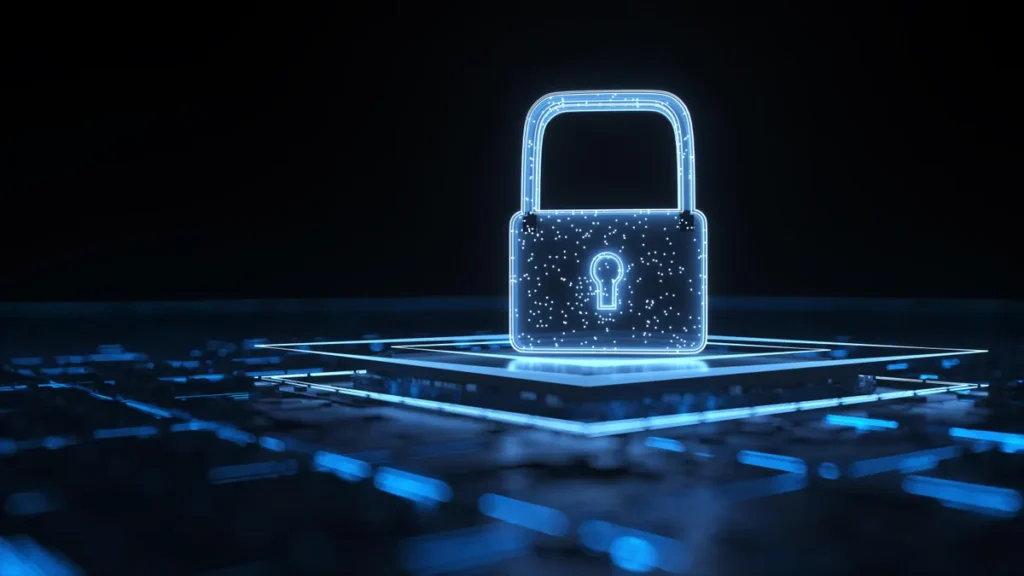
International law on privacy is a comprehensive framework established by various international agreements and conventions to protect the fundamental human right to privacy. It is enshrined in documents such as the UDHR, the ICCPR, and regional agreements. These standards emphasise the importance of safeguarding individuals’ privacy rights in the face of technological advancements and surveillance practices by both states and private entities. The right to privacy is further reinforced by principles surrounding surveillance, necessity, and proportionality, ensuring that any interference with privacy is consistent with legal requirements and respects human rights obligations. International human rights law provides a universal and clear framework for promoting and protecting the right to privacy, which is essential in upholding democracy, defending dignity, and demanding accountability from powerful institutions that breach public trust. RIGHT TO DATA PROTECTION AND PRIVACY Also, it is to be noted that the world has evolved in such a manner that mankind is dependent upon technology to gather and store one’s information. Even though the present technology is capable of securing one’s information, it is to be remembered that it is created by a human, which means that even such security and privacy of data and information also has a way of getting breached. Such acts not only affect one’s privacy but also lead to heavy loss or damage to that particular person whose data has been breached. An increase in activities like hacking and breaching into secured data of persons and organisations led to heavy loss in money and other information necessary for national security, for which various countries worldwide have decided to impose data privacy laws which help in reducing such crimes and increase the security of one’s data. With the rise of online social and economic interactions, there’s a growing recognition of the significance of safeguarding privacy and data protection. The gathering, utilising, and disseminating of individuals’ data to third parties without their consent or prior notice is equally problematic. A total of 137 out of 194 countries have implemented laws to ensure data security and privacy. THE RIGHT TO PRIVACY IN INTERNATIONAL AND REGIONAL TREATIES i. UNIVERSAL DECLARATION OF HUMAN RIGHTS, ARTICLE 12 (10 December 1948) “No one is allowed to violate someone’s privacy or attack their honour or reputation. Everyone has the right to legal protection against such violations or attacks.” ii. ARTICLE V OF THE AMERICAN DECLARATION ON THE RIGHTS AND DUTIES OF MAN: Right to protection of honour, personal reputation, and private and family life (2 May 1948) “Every individual has the right to legal protection against harmful assaults on their dignity, reputation, and their private and family life.” iii. THE EUROPEAN CONVENTION SAFEGUARDING HR AND FUNDAMENTAL FREEDOMS, Article 8: Right to Respect for Private and Family Life (4 November 1950) “1. Everyone is entitled to respect for their private and family life, home, and correspondence. iv. ICCPR, ARTICLE 17 (16 December 1966) “1. No individual should be exposed to arbitrary or unlawful interference with their privacy, family life, home, or correspondence, nor unjust attacks on their honour and credibility. v. CONVENTION OF AMERICA ON HUMAN RIGHTS, Article 11: Right to Privacy (22 November 1969) “1. Everyone has the right to have their honour respected and their dignity acknowledged. vi. THE ORGANIZATION FOR ECONOMIC COOPERATION AND DEVELOPMENT GUIDELINES FOR ENSURING PRIVACY AND THE INTERNATIONAL TRANSFER OF PERSONAL DATA, Part 1: General (23 September 1980) These Guidelines apply to personal data handled by public or private entities that, due to their processing methods, nature, or usage context, present a risk to privacy and individual liberties. These Guidelines are to be considered as the minimum standards, which can be enhanced by additional measures to safeguard privacy and individual freedoms, potentially influencing the international transfer of personal data. vii. COUNCIL OF EUROPE CONVENTION FOR SAFEGUARDING INDIVIDUALS IN AUTOMATED PROCESSING OF PERSONAL DATA, Article 1: Object and Purpose (28 January 1981) “The purpose of this convention is to guarantee, within each Party’s territory, the protection of rights and fundamental freedoms for every individual, regardless of nationality or residency. This includes ensuring their right to privacy concerning the automated processing of personal data related to them (referred to as “data protection”)”. viii. CONVENTION ON RIGHTS OF THE CHILD, ARTICLE 16 (20 November 1989) AUTHOR: Eshwar S, 5th year B.A, LL. B(Hons.), Veltech School of Law, Chennai.
Corporate Tax Evasion
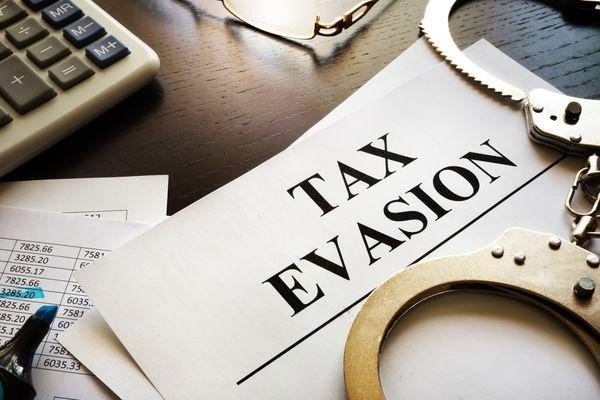
Tax evasion involves unlawfully evading tax obligations. It is a serious offence that bears harsh penalties and criminal charges. For example, tax fraud falls under the category of tax evasion, which includes failing to pay taxes or paying less than what is necessary. It also includes lying about income, claiming deductions without supporting documents, failing to disclose cash transactions, etc. The penalty for withholding income information might vary from 100% to 300% of the total tax. You must pay the necessary taxes to avoid fines and criminal punishment. How does Tax Evasion Occur? Tax evasion refers to failing to pay taxes on time, which is unlawful in India. The following are some methods that tax evasion occurs in India: (i) Non-payment of due taxes: One of the most frequent methods of tax evasion. Even if a tax is owed, an individual or organization willfully fails to pay it. (ii) Smuggling to save different taxes: Many firms use smuggling to avoid paying state taxes, customs fees, and import-export levies. Smuggling is a criminal violation under Indian law, and the punishment might be increased if it is done for tax evasion. (iii) Submit incorrect tax returns: An individual files a tax return but provides misleading or erroneous information to decrease or avoid paying taxes. It also qualifies as tax evasion because the individual did not provide complete information and paid less tax. (iv) Maintaining fake financial statements: Businesses may use misleading financial records such as account books and balance sheets to reflect a low annual income. For example, a company may fail to declare sale receipts to understate its total income and decrease its annual tax liability. (v) Keep money outside India: The IT department does not manage international bank accounts. Some people use an international bank account to hold money without disclosing their overall income. (vi) Fake documents to claim exemption: The government gives individuals exemptions to ensure they have more cash. People, however, take advantage of these exemptions by creating fraudulent documents, even if they do not qualify for them. (vii) Bribery : Bribing an income tax official to change the amount of tax due is another method of tax evasion. Individuals pay bribes to remove or reduce tax records in their name. Penalties for Tax Evasion The income tax department may levy various penalties if a person is found guilty of tax evasion. Individuals and businesses may face penalties if they fail to pay their taxes on time. The following are some punishments for tax evasion: (i) You may be required to pay between 100% and 300% of the tax on undeclared income. (ii) If you fail to pay the required tax, the income tax department may apply a penalty, which cannot exceed the amount owed in taxes. (iii) If a corporation fails to deduct tax (such as TDS) when making payments, the penalty may include payment of the tax due. (iv) A company must have itself audited and submit an audit report. If it fails to do so, it may face a penalty of Rs 1.5 lakh or 0.5% of its sales turnover (whichever is less). (v) The company may be fined Rs 1 lakh if an accountant’s report is not provided as ordered. (vi) If an individual fails to file tax statements within the specified time frame, he shall be subject to a daily penalty of Rs 200. (vii) Section 44AA[1] specifies how a person or company should maintain its accounts. If it does not follow the criteria, a Rs 25,000 penalty may be imposed. AUTHOR: Eshwar S, 5th year B.A, LL. B(Hons.), Veltech School of Law, Chennai.
Procedure to register under GST
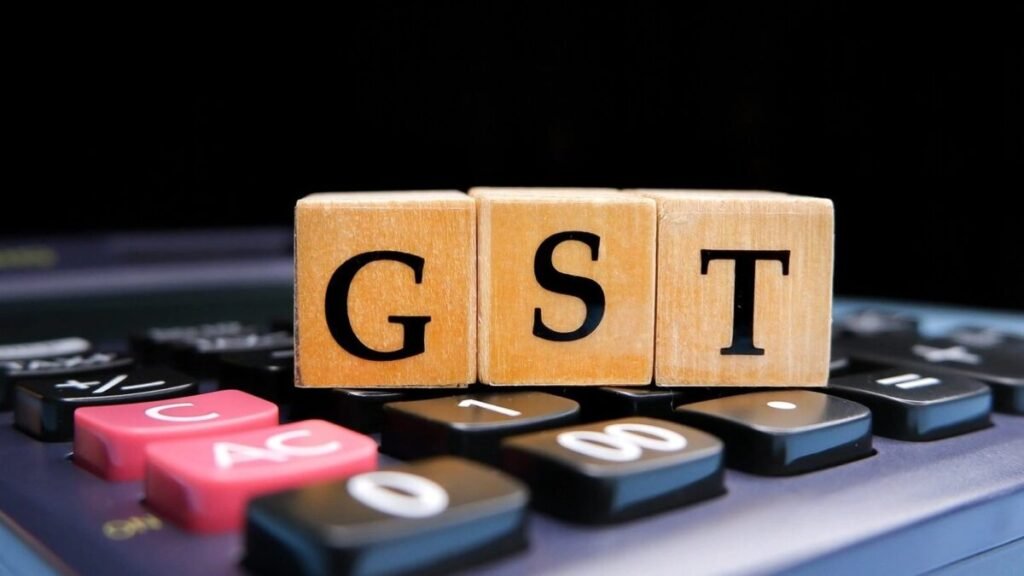
The Goods and Services Tax is a value-added tax system applied to most goods and services sold for domestic consumption. It is an indirect tax, replacing various indirect taxes in India, such as value-added tax, excise duty, and service tax. Designed to be comprehensive, multi-stage, and destination-based, GST is imposed at each stage of the supply chain on the value added. This system levies taxes at every point of sale, with central GST and state GST applicable for intra-state transactions and integrated GST for inter-state transactions. The introduction of Goods and Service Tax in India aimed to simplify the tax structure, eliminate tax cascading, reduce compliance burdens, and establish a unified tax framework nationwide. Its introduction has notably enhanced tax compliance, reduced instances of tax evasion, broadened the tax base, and facilitated seamless input tax credit flow. As a result, GST has contributed to a more efficient and transparent indirect tax system in India. The GST in India is primarily governed by the Goods and Services Tax Act, enacted on March 29 2017, and which came into effect on July 1, 2017. Types of GST Tax in India: GST Registration: Under the Goods and Services Tax (GST) system, businesses with turnovers exceeding specific threshold limits of Rs. 40 lakhs, Rs. 20 lakhs, or Rs. 10 lakhs, as applicable, are required to register as regular taxable entities. This process is known as GST registration and is mandatory for certain businesses. Failure to register under GST while conducting business is considered an offence, resulting in severe penalties. Typically, GST registration is completed within 2–6 working days. Eligibility criteria for GST registration: Any service provider offering services worth more than Rs. 20 Lakhs within a year must obtain GST registration. An entity must register for GST if it supplies goods inter-state, i.e., from one state to another, irrespective of their aggregate turnover. Inter-state service providers only need GST registration if their annual turnover exceeds Rs. 20 lakhs or Rs. 10 lakhs in special category states. Any individual selling goods or services through an e-commerce platform must register for GST, regardless of turnover. Anyone running a temporary stall or shop selling goods or services must apply for GST. The Goods and Services Tax Network portal provides specific instructions on registering for GST in India. They are: AUTHOR: Eshwar S, 5th year B.A, LL. B(Hons.), Veltech School of Law, Chennai.
